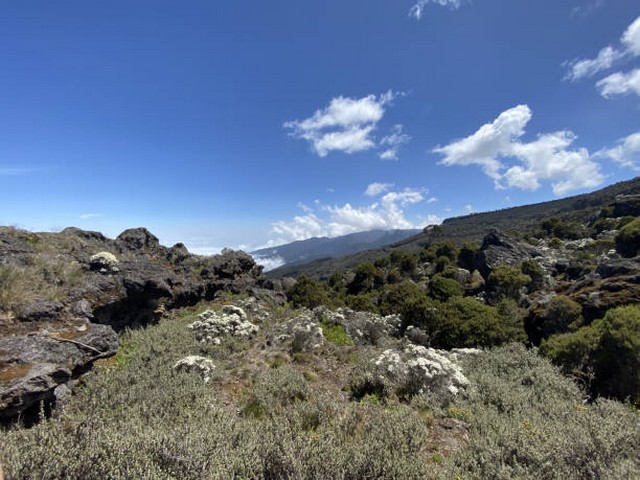Altitude Acclimatization Tips for Kilimanjaro: Reach the Roof of Africa with Ease
Welcome to the majestic world of Mount Kilimanjaro, where the adventure of a lifetime awaits at the summit of Africa’s tallest peak. Here at the Kilimanjaro Centre for Trekking and Ecotourism (KCTE), we understand that the journey to Uhuru Peak is not just about endurance and strength, but also about smart preparation, particularly when it comes to altitude acclimatization. In this guide, we will share essential altitude acclimatization tips that will help you conquer Kilimanjaro with confidence and joy.
Why Is Altitude Acclimatization Crucial for Kilimanjaro?
Climbing Kilimanjaro is a dream for many, but the high altitude can turn this dream into a challenge. At over 19,000 feet, the summit of Kilimanjaro is well into the zone where altitude sickness can occur. Acclimatization is your body’s natural process of adjusting to lower oxygen levels, and it’s essential for a successful and enjoyable climb. Understanding and preparing for altitude is key to minimizing the risk of acute mountain sickness (AMS), which can not only hinder your trek but also become a severe health risk.
Pre-Climb Preparation
Start Early with Aerobic Training
Long before you set foot on Kilimanjaro, start preparing your body. Engage in aerobic exercises such as running, cycling, and swimming. This boosts your cardiovascular health, making your body more efficient at utilizing oxygen and better prepared for high altitudes.
Visit a High-Altitude Location
If possible, train in high-altitude areas. Short hikes or stays at altitude can significantly boost your acclimatization process. This pre-exposure will kick-start your body’s adaptation mechanisms, giving you a head start before your Kilimanjaro adventure.
Choosing the Right Route – Slow and Steady Wins the Race
At KCTE, we recommend selecting a route that allows for gradual ascent and provides ample time for acclimatization. Routes like the Lemosho, Machame, and Rongai offer a slower ascent, giving your body time to adjust to the altitude changes naturally and reduce the risk of AMS.
Lemosho Route: The Scenic Path
The Lemosho route is renowned for its beauty and effectiveness in altitude acclimatization. Spanning over 7 to 8 days, it starts at a lower altitude and includes longer trekking days in the beginning, which helps in gradual acclimatization.
Machame Route: The Whiskey Route
Popularly known as the "Whiskey" route, the Machame route is both challenging and rewarding. Over 6 to 7 days, it offers varied terrains and altitudes that assist in better acclimatization and offers stunning views, keeping your spirits high.
Rongai Route: The Remote Trail
The Rongai route approaches Kilimanjaro from the north and is less crowded. Its gradual ascent profile makes it an excellent choice for trekkers worried about altitude sickness.
On the Mountain: Tips for Successful Acclimatization
Hydrate, Hydrate, Hydrate
Keeping hydrated is crucial at altitude. Dehydration can mimic or worsen the symptoms of AMS. Aim for 4-5 liters of water per day. Our guides at KCTE always emphasize hydration, reminding you throughout the day to keep drinking water.
Walk Slowly – “Pole Pole”
The Swahili term “Pole Pole” (slowly, slowly) is the mantra on Kilimanjaro. Walking at a slower pace helps your body adjust to the altitude gradually and can significantly improve your acclimatization.
Eat Well and Rest
Your body needs more calories at altitude. We ensure high-energy meals are provided throughout the climb. Additionally, a good night’s sleep is vital. Rest helps your body recover and acclimatize.
Listen to Your Body
Recognize the signs of altitude sickness, which include headache, nausea, and dizziness. Our experienced KCTE guides are trained to monitor climbers for any signs of altitude sickness and will assist in making decisions about ascending or descending based on your condition.
After the Summit: The Importance of a Proper Descent
Reaching the summit is exhilarating, but the descent is equally important. Descend slowly and give your body time to readjust to the increasing oxygen levels.
FAQs on Climbing Kilimanjaro
What is the best time to climb Kilimanjaro?
The best times are during the dry seasons: January to mid-March and June to October.
How fit do I need to be to climb Kilimanjaro?
A moderate level of fitness is necessary. Engaging in pre-climb training for at least three months prior to the trek is recommended.
What should I pack for Kilimanjaro?
Pack warm layers, waterproof clothing, hiking boots, a sleeping bag suitable for low temperatures, a hydration system, and sun protection. KCTE provides a comprehensive packing list to all our clients.
Can I climb Kilimanjaro if I have never been at high altitude?
Yes, many first-time high-altitude climbers have successfully summited Kilimanjaro. Choosing a suitable route and following acclimatization tips are key.
Ready to Conquer Kilimanjaro?
Climbing Kilimanjaro is a journey of a lifetime and being well-prepared for the altitude is your ticket to a successful summit. At the Kilimanjaro Centre for Trekking and Ecotourism (KCTE), we’re dedicated to providing you with an unforgettable and safe climbing experience. Book your Kilimanjaro climb with us today, and let us guide you to the top with the expertise and care you deserve!
Embark on this incredible adventure and reach the roof of Africa. Remember, the summit is within reach when you climb smart and acclimatize right. Join us, and let’s make your Kilimanjaro dream come true!




